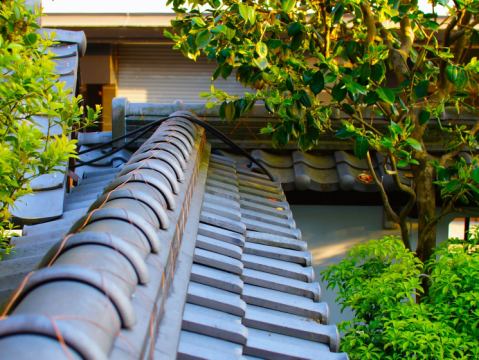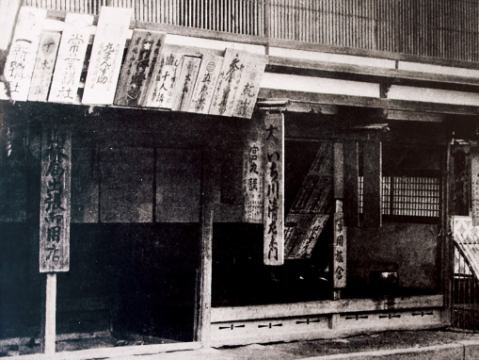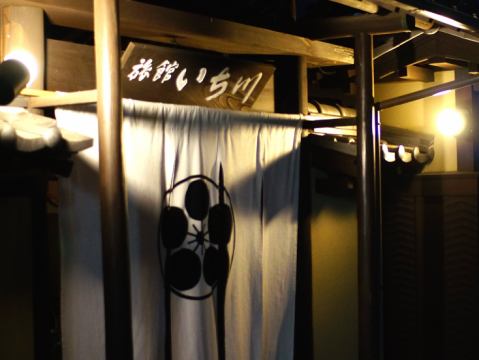- Top
- History of Ichikawa
History of Ichikawa

400 years journey
Founded 400 years ago Japan's oldest Hatago"Kadoya』
- Around the time of Tokugawa Iemitsu, the third shogun of the Tokugawa family.
Of the 69 stages Nakasendo that connect Edo (the shogunate) and Kyoto (the imperial court),
At the 46th post station in Oi (now Ena City) counting from Edo,
The first generation, Soemon Ichikawa, started the business of Hatago"Kadoya".
With the advent of an era in which not only samurai families but also commoners were allowed to travel, many people came and went through post towns,
In particular, Oi-juku is close to the junction of Nakasendo to Kyoto and the road to Owari and Ise.
It was bustling with visitors to Owari merchants, Owari merchants, and visitors to Ise-san and Zenkoji Temple.
At the end of the Tokugawa shogunate, when Princess Kazunomiya went east to marry the 14th shogun, Iemochi, there was a great uproar.
This is also the reason why Nakasendo is called "Hime Kaido".
After that, the Edo period ended, and the role of the post town ended.
While there are only a few Hatago left across the country,
Although Kadoya changed its name to Ryokan ICHIKAWA in the first year of the Meiji era,
We have continued to operate as the oldest Hatago, keeping the atmosphere of the ryokan and the spirit of Japan intact.
"People meet because there is a road"
- Today and in the future
"Kadoya" hopes to be a crossroads of joy for people in Japan and overseas.
Origin of Ichikawa
 The founder of the family, Soemon Ichikawa, started the Kan'ei period Hatago"Kadoya" at the current location.
The founder of the family, Soemon Ichikawa, started the Kan'ei period Hatago"Kadoya" at the current location.
Thanks to the support of everyone in the area for the next 400 years,
We were able to continue our business until today.
Kadoya's name was changed to "Ryokan ICHIKAWA" in the first year of the Meiji era.
The building was rebuilt after the Great Fire Oi-juku in Tenmei 7,
The photo in the entrance lobby continued until 1935.
It was a two-storied building with lattice lattices unique to Kisoji.
It was built facing east at the end of the third masu-shaped building coming from the Edo side.
That's why I called it "Kadoya". My father was the mayor of Oi Town for 20 years from the early Showa period until the end of the war.
My father was the mayor of Oi Town for 20 years from the early Showa period until the end of the war.
In the meantime, Masugata Road is inconvenient,
Offered the land owned by the Ichikawa family and the Furuya family next door,
A straight road to Oibashi was opened in 1935.
It was a real shame, but the old Kadoya building was all demolished.
The current building was built after that.
The red pine and nishiki pine in the garden have been around for a long time,
I know all the old things,
There is no way to hear it.
The 14th head of the family, Shinpei Ichikawa.
What is Hatago?
 Hatago"Kadoya"Hatago is a house that served travelers in the Edo period.
Hatago"Kadoya"Hatago is a house that served travelers in the Edo period.
In the Edo period, there were many Hatago at each post station on the highway,
It was crowded with samurai and ordinary people staying overnight.
Oi-juku is one of the leading post towns Nakasendo, and has many Hatago.
In 1843, there were 41 houses.
This is the best of the 16 inns in Mino.
Since the average number of Hatago on Nakasendo is 27.1,
You can imagine the bustle of Oi-juku. "Ryokan ICHIKAWA"The photo above is the front of Kadoya, Hatago in Oi-juku.
"Ryokan ICHIKAWA"The photo above is the front of Kadoya, Hatago in Oi-juku.
It has a projecting girder structure, which is common in Kisoji, and a removable lattice door is fitted.
Many kofuda are hung in the eaves.
The right side was the entrance gate for special people.
Kadoya (currently Ryokan ICHIKAWA) is a new building, but
Even now, it is the only inn in Oi-juku that continues to run a representative Hatago from the Edo period.

